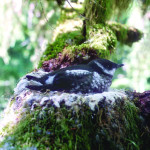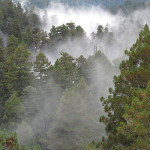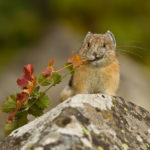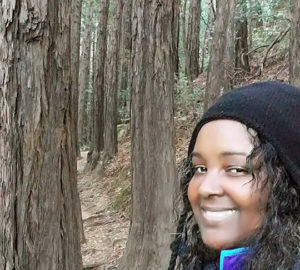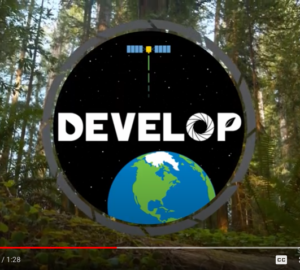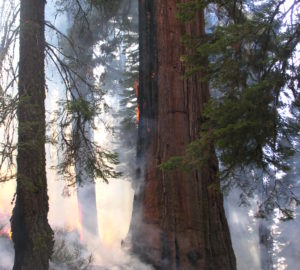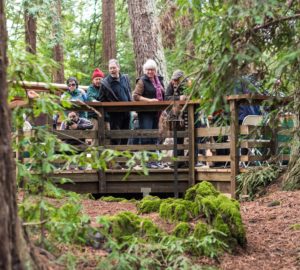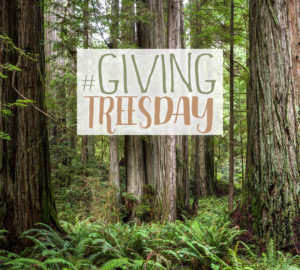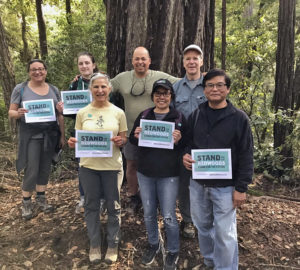Valentine’s Day is upon us, and here at Save the Redwoods League we can’t help but daydream about the great duos in history. You might wonder who we had in mind. Romeo and Juliet? Beyoncé and JAY-Z?
Nah.
We’re thinking about the iconic redwood forest duos—those essential relationships between the trees, the environment, and the creatures who make the redwood forests their home. Can you guess any of these amazing duos?
Coast Redwoods and …
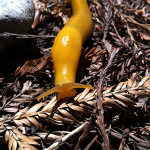
Banana Slugs
Banana slugs do an important, underappreciated job in the redwood forest. They’re detritivores, meaning that they eat dead and decomposing plants and animals. Basically, these slimy yellow stewards help clean up the redwood forest.
And while banana slugs are also happy to munch on many living plants, they refuse to eat any redwood seedlings. It seems appropriate: Eventually these seedlings will grow into the gargantuan trees that provide the cool, wet habitat that banana slugs need to thrive. And by eating the other plants, banana slugs help eliminate competition for young redwoods.
Marbled Murrelets
For centuries, nobody knew where the marbled murrelet laid its eggs. And as it turns out, these small, plump sea birds nest in old-growth coast redwood trees. The bird lays its single egg on a wide, high-up branch, one that provides a flat and mossy surface.
Unfortunately, with such a specific nesting requirement, it’s easy to see why the murrelet is imperiled. There is, however, one silver lining: Many coast redwood forests, where the bird nests, are strictly protected from logging and development.
Fog
Coast redwoods love, and need, water. Luckily, during California’s long, dry summer months, plenty of fog rolls in from the ocean. This thick, misty blanket is what sustains coast redwoods while they go for months without rain. Redwoods can absorb water directly through their leaves. The fog also carries other necessary nutrients to the forest, like nitrogen. For the sake of our beautiful coastal forests, we’re glad that fog is such a loving partner.
Giant Sequoia and …
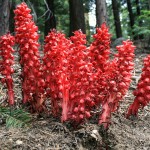
Snow Plants
In a landscape filled almost exclusively with brown and green hues, the snow plant looks decidedly out of place. Its red stalk emerges straight from the ground in spring. Sometimes the plant pushes up from under the melting snow, creating a striking red-white contrast. People often confuse this plant with a mushroom, which is understandable, since no part of it is green. In fact, the plant contains no chlorophyll, and has no means of photosynthesizing to produce its own food.
Instead, the snow plant interferes with another relationship. Underneath the forest floor, symbiotic fungi provide minerals and nutrients to giant sequoias in exchange for sugar, the “food” produced by photosynthesis. The snow plant taps into this network and steals sugars from the fungus. Essentially, this is a very one-sided relationship!
Pikas
The pika is an ultra-cute, mouse-like creature that dwells in rock outcrops at high elevations. With fur in their ears and on the bottoms of their feet, they’re well-equipped for cold weather. But as average temperatures begin to rise, pikas are forced to take shelter during the day, which prevents them from gathering enough food.
Giant sequoias, which share the pika’s range, also struggle with climate change. These giant trees can absorb up to 500 to 800 gallons of water every day. As temperatures rose and rain became a rarity during California’s 2015 drought, some trees lost more than half their foliage.
Play our fun Forest Matchmaker game now to see how well you can match these unique duos!
Learn more about our amazing redwood forests with our redwood facts and 100 reasons why you should stand for the redwoods.
